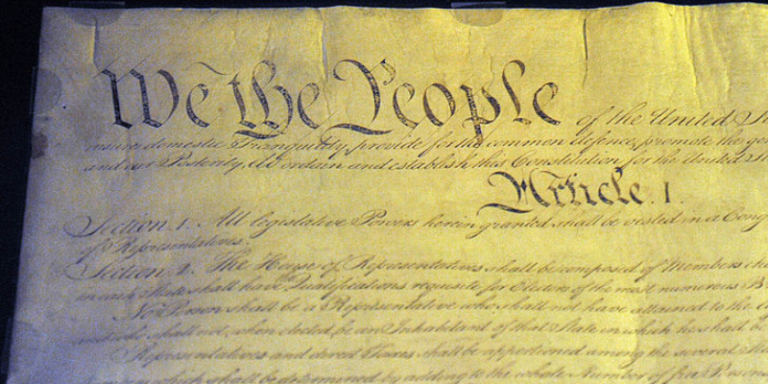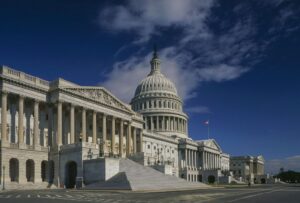The US Government: Three Co-Equal Branches
The three branches of government keep each other in check.
By: Jose Backer | September 22, 2020 | 729 Words

United States Constitution (Photo by Jeff OversBBC News & Current Affairs via Getty Images)
Our federal government consists of three branches: the legislative, executive, and judicial. They are all described in the United States Constitution.
The three branches of government are all equal — they each play a unique role in lawmaking. Each branch holds certain powers, and each branch “checks” the others. This means they can restrict each others’ attempts to grab more power.
The Legislative Branch: Making Laws
The legislative branch is established by Article I of the Constitution and consists of Congress, including the House of Representatives and the Senate. The House of Representatives is based on the population in each state — currently, it has 435 members. The Senate consists of two senators from each state, no matter the state’s size or population — that means it has 100 total members.

Capitol Building (via Getty Images)
The main role of the legislative branch is to debate and write new legislation, which becomes law if passed. It has a few additional powers, too. The legislative branch has the power to:
- Introduce legislation
- Declare war
- Impeach and remove the president and other officials
- Borrow money on behalf of the nation
- Coin money and regulate currency, weights and measures
- Raise taxes
- Control federal spending
- Investigate certain matters
- Approve or reject appointments made by the president
Checks: The legislature checks the executive and judicial with its control over presidential appointments — approving or rejecting people for jobs in the federal agencies, the courts, or the cabinet. It also checks the executive with its power to impeach and remove the president and other officials.
It can also check the judicial proposing amendments to the Constitution.
Being Checked: The president can veto legislation, which blocks any bill passed by Congress. This requires two-thirds of both the Senate and House to override. The judicial can strike down unconstitutional laws passed by the legislative.
The Executive Branch: Enforcing Laws
The executive branch is established by Article II of the Constitution. The president is the head of the branch, followed by the vice president — they are in charge of federal agencies and departments. The president appoints the heads of many federal departments to help manage the government.
The executive is primarily responsible for carrying out the laws passed by Congress.
The executive also has the power to:
- Approve or veto bills passed by Congress
- Suggest laws to Congress
- Deal with foreign countries and negotiate treaties
- Grant pardons to people convicted of federal crimes
- Appoint people to certain jobs in the federal government (eg. judges, heads of federal agencies)
- Control the military
Checks: The executive checks Congress by approving or rejecting bills — as well as its ability to propose laws to Congress. It also checks the judicial by appointing its desired federal judges.
Being Checked: Congress has the power to override a presidential veto. It can also impeach and remove presidents and federal employees who have overstepped their power, as well as blocking presidential appointments. The judicial can check the executive by blocking unconstitutional actions.
The Judicial Branch: Reviewing Laws
The judicial branch is established by Article III of the Constitution. The Supreme Court is the most powerful institution in the judicial branch, which currently has nine justices. The judicial branch also consists of district courts and appeals courts.
The judicial branch has the power to:
- Interpret the meaning of laws
- Strike down laws it deems unconstitutional
- Block executive actions it deems unconstitutional
Checks: The judicial branch’s power to interpret the constitutionality of federal law gives it a check over both the legislative and executive branches. It can also block executive actions.
Being Checked: The legislative and executive determine who will get the job of being a judge in federal courts. Judges can be removed if they overstep their power, and new changes to the constitution can be put in place.
Checks and Balances
In a way, the three branches of government work in opposition and competition. This creates a system of “checks and balances” so that no one group can dominate. Each branch “checks” the power of the others, and this system creates a “balance” of power.
So, why did the Founders put three separate and co-equal branches in charge of the U.S. federal government? They wanted to stop too much power from accumulating in one place. That’s why they designed a system based on the separation of powers.
















